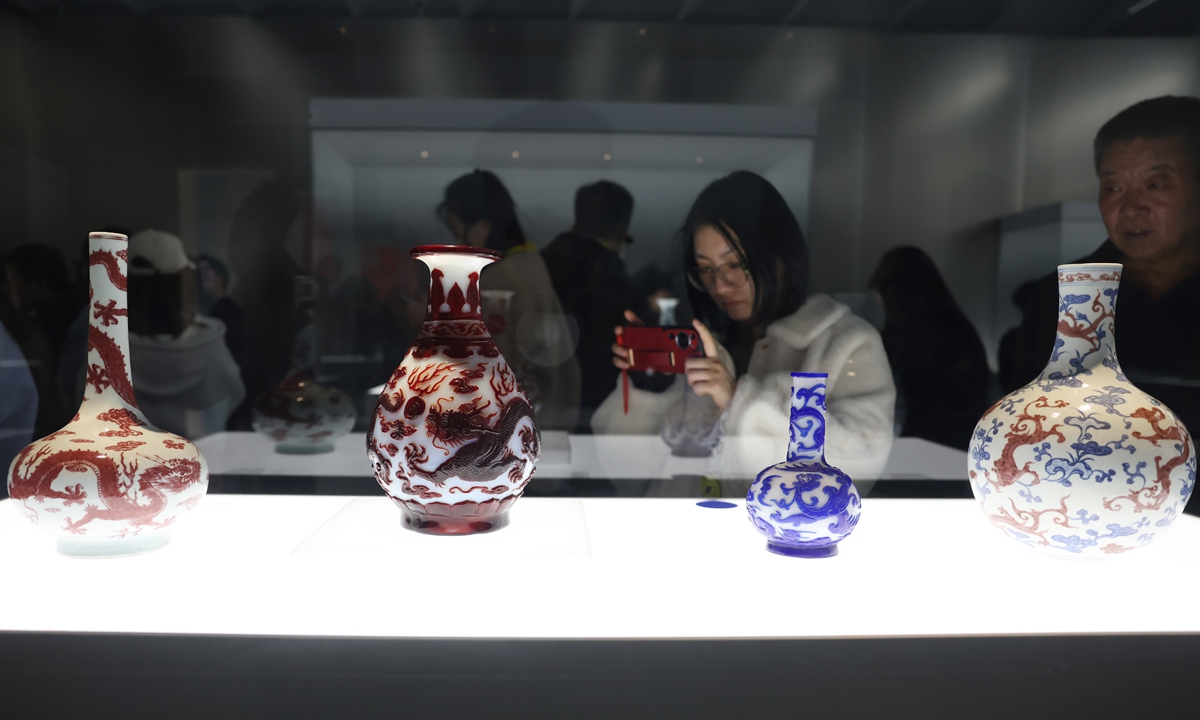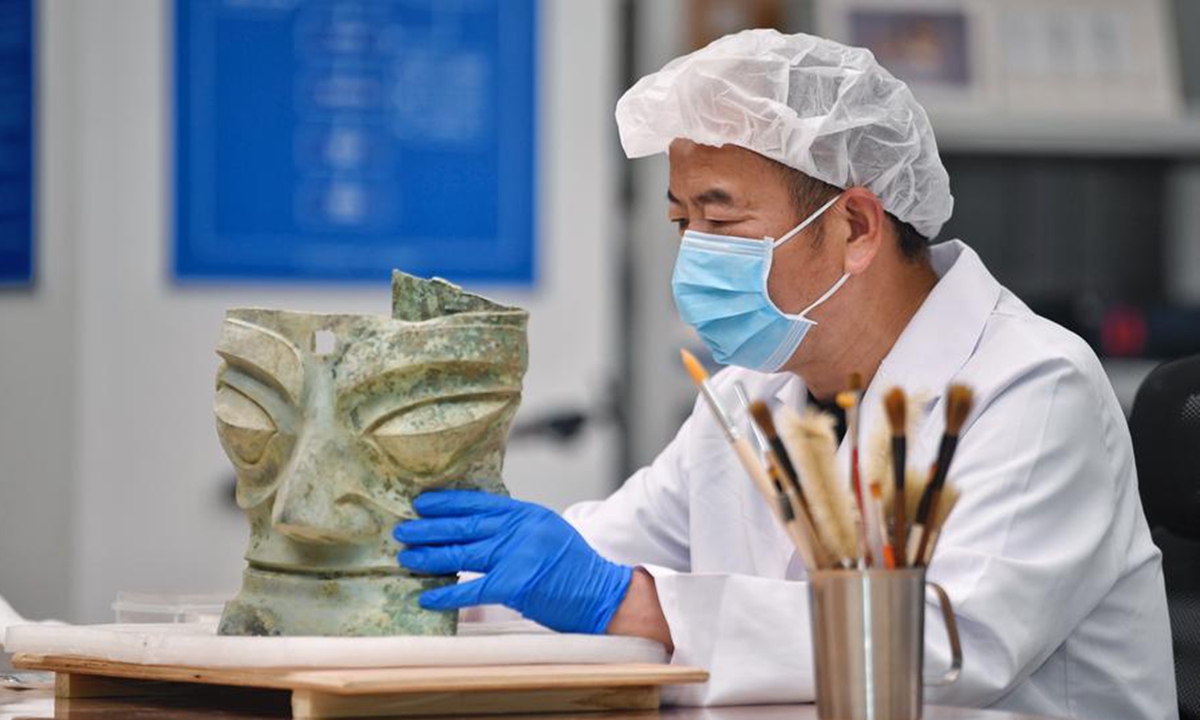Inspection project to review implementation of ICH law
Cultural heritages ‘prolific, diverse, scattered’: expert

A visitor explores an exhibition of glass artifacts from the Palace Museum at an art center in Beijing. Photo: VCG
Using strategies such as sending supervising teams to various provinces around China, a nationwide inspection project reviewing the implementation of the country's Intangible Cultural Heritage (ICH) Law was recently launched by the Standing Committee of the National People's Congress (NPC), which is the top legislature in China.The project has set several goals, including the evaluation of ICH resource usage across the country, and checking the implementation of local sectors' conservation duties. Examining ICH inheritance and promotional conditions is another goal. Meanwhile, inspection teams will investigate whether or not ICH representative projects are being developed nationwide.
By the end of 2023, there are a total of 1,557 national-level ICH representative projects in China. The spectrum of these projects cover more than 100,000 items when considering the country's ICH at not only the national level, but also the provincial, municipal, and county levels.
Xiang Xinshuang, a cultural and ICH management expert, told the Global Times that "prolific, diverse and scattered" are the best terms to describe China's ICH. The newly launched project is actually "taking a timely inventory of those resources in 2024, while also helping regional departments distinguish issues with their management plans."
The project will be carried out in two ways. For the first, a supervision team will investigate eight provinces and regions such as Shanxi, Fujian, Guangdong, Yunnan and Northwest China's Xinjiang Uygur Autonomous Region from May to August.
The second approach involves getting local authorities in cities like Shanghai and provinces such as Sichuan, Zhejiang, Guizhou and Gansu to carry out regional "self examinations." In Shanghai for instance, the Standing Committee of Shanghai Municipal People's Congress will be the authority in charge of the inspection.
In 2023, Chinese provinces like Yunnan carried out regional ICH inspections to identified problems such as "potential security risks," "lack of responsible implementation" and "lack of investment in ICH conservation."
Besides distinguishing management problems, the inspection program evaluated the implementation of the Intangible Cultural Heritage Law of China.
In June 2011, the law came into force after having been adopted by the 19th Session of the Standing Committee of the 11th NPC in February that year.
Xue Ling, an ICH conservation policy researcher, told the Global Times that the law addresses Chinese ICH by particularly focusing on "how these legacies can be inherited and conserved, while also having their cultural value spread to the public."
Adhering to the law, a notice focusing on promoting the high-quality inheritance of traditional Chinese craftsmanship was jointly issued in 2022 by 10 national departments, including the Ministry of Culture and Tourism of China. The regulation encouraged more "comprehensive systems" being built to conserve ICH.
Xue told the Global Times that due to the diversity of ICH there isn't a universal system that can be applied to manage all its various forms.
"Each regional department or sub-conservation organs should have a tailored plan for their own ICH," Xue noted.
In April, Beijing carried out a novel "immersive" ICH inspection that mainly focused on ICH exhibition venues. District-level ICH experience centers, museums, ICH inheritor workshops were all subjects of the project. A new sector that collects grassroots ICH workers' advice was also added to the program.
In October, the results of the current ICH inspections will be reported to the Standing Committee of the NPC.



